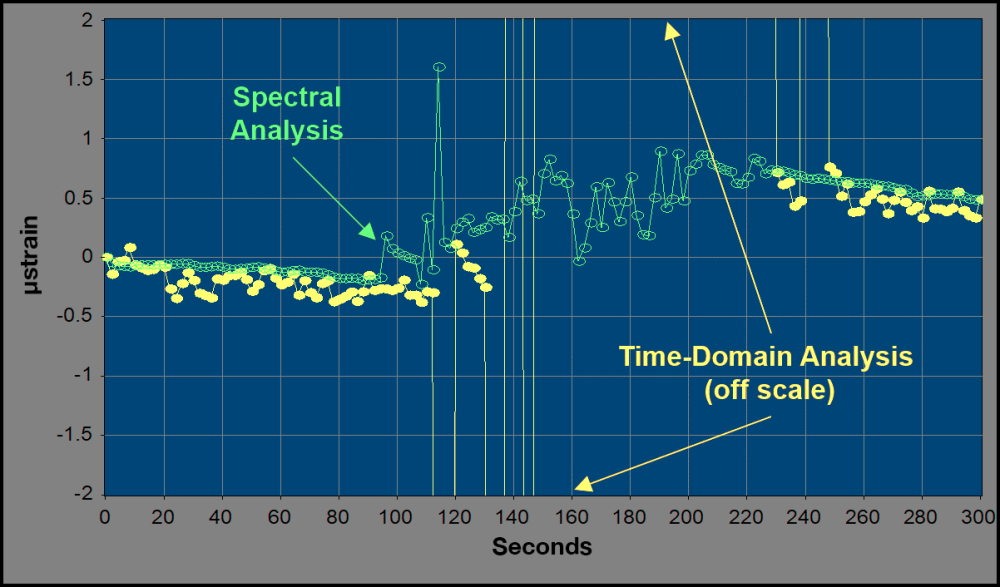How to Obtain Vibrating Wire Measurements in Environments with High Electromagnetic Noise
von Timothy Jeppsen | Aktualisiert: 10/07/2020 | Kommentare: 0

In 1997, I had my first introduction to using vibrating wire piezometers to measure groundwater fluctuations. A large engineering firm was monitoring water level to ensure that construction of a large pipeline through the San Bernardino Mountains was not intruding on the groundwater. I was hired to install CR10X dataloggers with AVW100 vibrating wire interfaces to measure the piezometers. Data from the CR10X was transmitted to the engineering firm via cellular modem.
The data from each of the eight sites was regularly transmitted and looked good, until the construction of the tunnel through the mountain began. As soon as the electromagnetic noise of the heavy tunneling equipment reached the vibrating wire sensors, the readings were lost in all the noise. Water-level changes could not be detected due to the extreme out-of-range readings caused by the noise.
Vibrating wire sensors were originally selected for this project because they are known to be very accurate and stable over long periods of deployment. However, as we discovered, they are also very susceptible to external electromagnetic noise.
Time-Domain Analysis
At the time the monitoring equipment was installed, time-domain analysis was the method used to read a vibrating wire sensor. The AVW100 would excite the sensor wire and then measure the average time between a predetermined number of positive-slope zero crossings to give the wire’s resonant period. The resonant frequency is the reciprocal of the resonant period. Using time-domain analysis is the traditional method all manufacturers measure a vibrating wire sensor.
This method of measuring vibrating wire sensors works very well in low-noise environments. However, in noisy environments, the sensor measurement is lost in the noise.
Spectral Analysis
In 2008, Campbell Scientific introduced the AVW200 and AVW206 vibrating wire analyzer modules. These modules implemented the patented* spectral-analysis technique to measure vibrating wire sensors, which eliminates the electromagnetic noise.
The spectral-analysis approach analyzes the response of the excited wire as a function of frequency, rather than time. Not only does this approach remove the noise, but it also improves the measurement precision. Manufacturers of vibrating wire sensors typically will resolve changes in resonant frequency to 0.1 Hz. In the absence of noise, a measurement precision of 0.01 Hz rms is achieved using the time-domain method, whereas a measurement precision of 0.001 Hz rms is achieved using spectral analysis.

Vibrating Wire Spectral-Analysis Technology (VSPECT®)
The patented VSPECT technology is available in several Campbell Scientific products. Click any of these links to learn more about these products:
- CR6 Measurement and Control Datalogger
- Granite™6 Measurement and Control Data-Acquisition System
- Granite™ VWire 305 Dynamic Vibrating Wire Analyzer
- CRVW3 3-Channel Vibrating Wire Datalogger
- VWAnalyzer Vibrating Wire Analyzer (handheld field-reporting tool)
- AVW200 Vibrating Wire Analyzer Module
To learn more about our patented VSPECT technology, visit our VSPECT Essentials web resource.
*The dynamic vibrating wire measurement technique is protected under U.S. Patent No. 8,671,758, and the vibrating wire spectral-analysis technology (VSPECT) is protected under U.S. Patent No. 7,779,690.




 Timothy is the Senior Marketing Manager at Campbell Scientific, Inc. He began his Campbell Scientific career as an Applications Engineer specializing in aquaculture applications and has also held positions as a sales engineer, manager of the Water Resources Group, and Marketing Product Manager for data loggers and communications products. Timothy received his bachelor’s degree in marketing from Utah State University and his master’s degree in quantitative genetics from Auburn University.
Timothy is the Senior Marketing Manager at Campbell Scientific, Inc. He began his Campbell Scientific career as an Applications Engineer specializing in aquaculture applications and has also held positions as a sales engineer, manager of the Water Resources Group, and Marketing Product Manager for data loggers and communications products. Timothy received his bachelor’s degree in marketing from Utah State University and his master’s degree in quantitative genetics from Auburn University.
Kommentare
Please log in or register to comment.